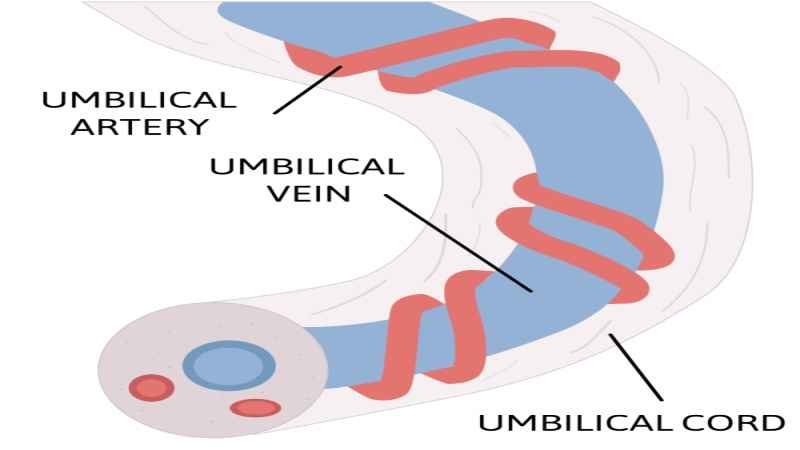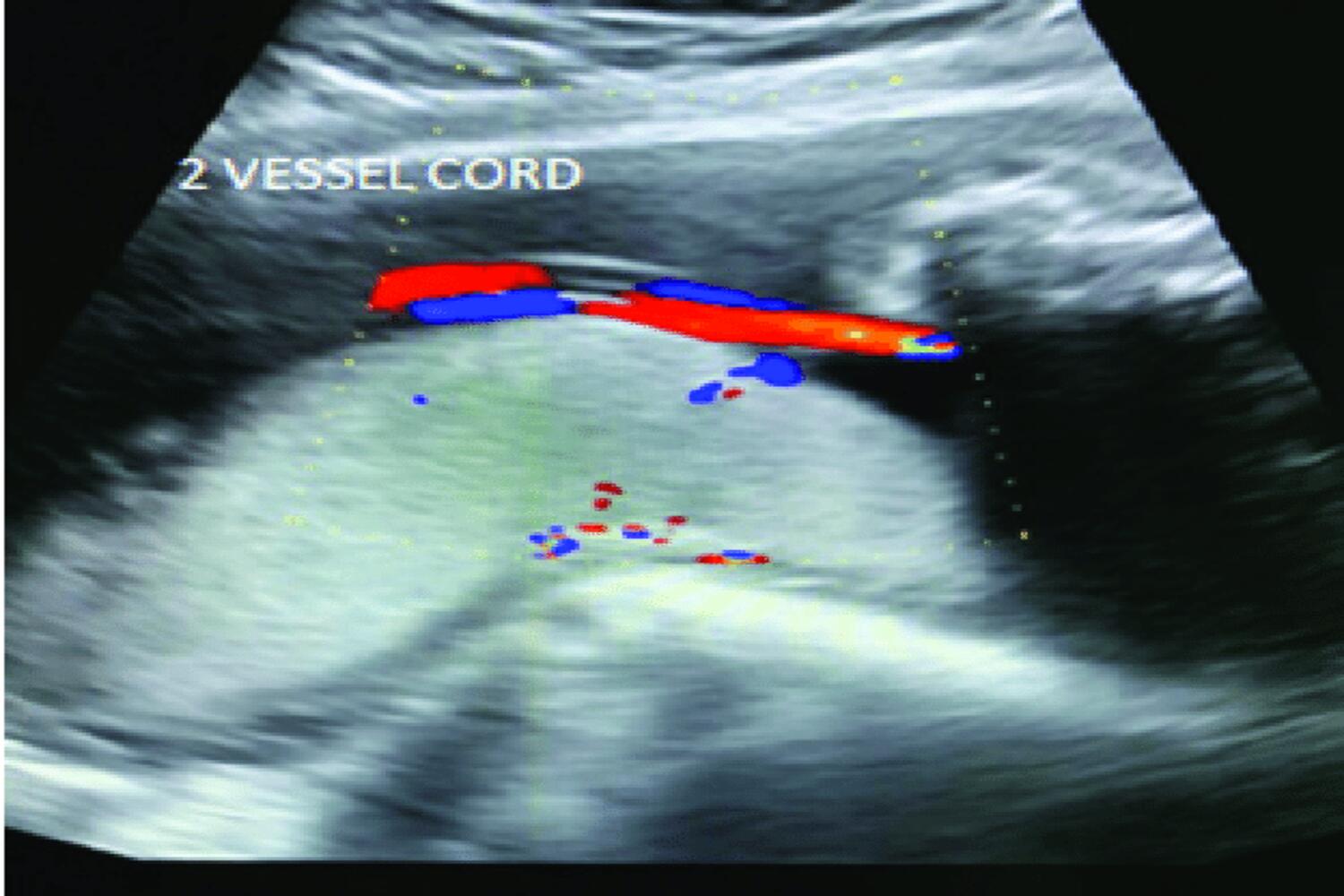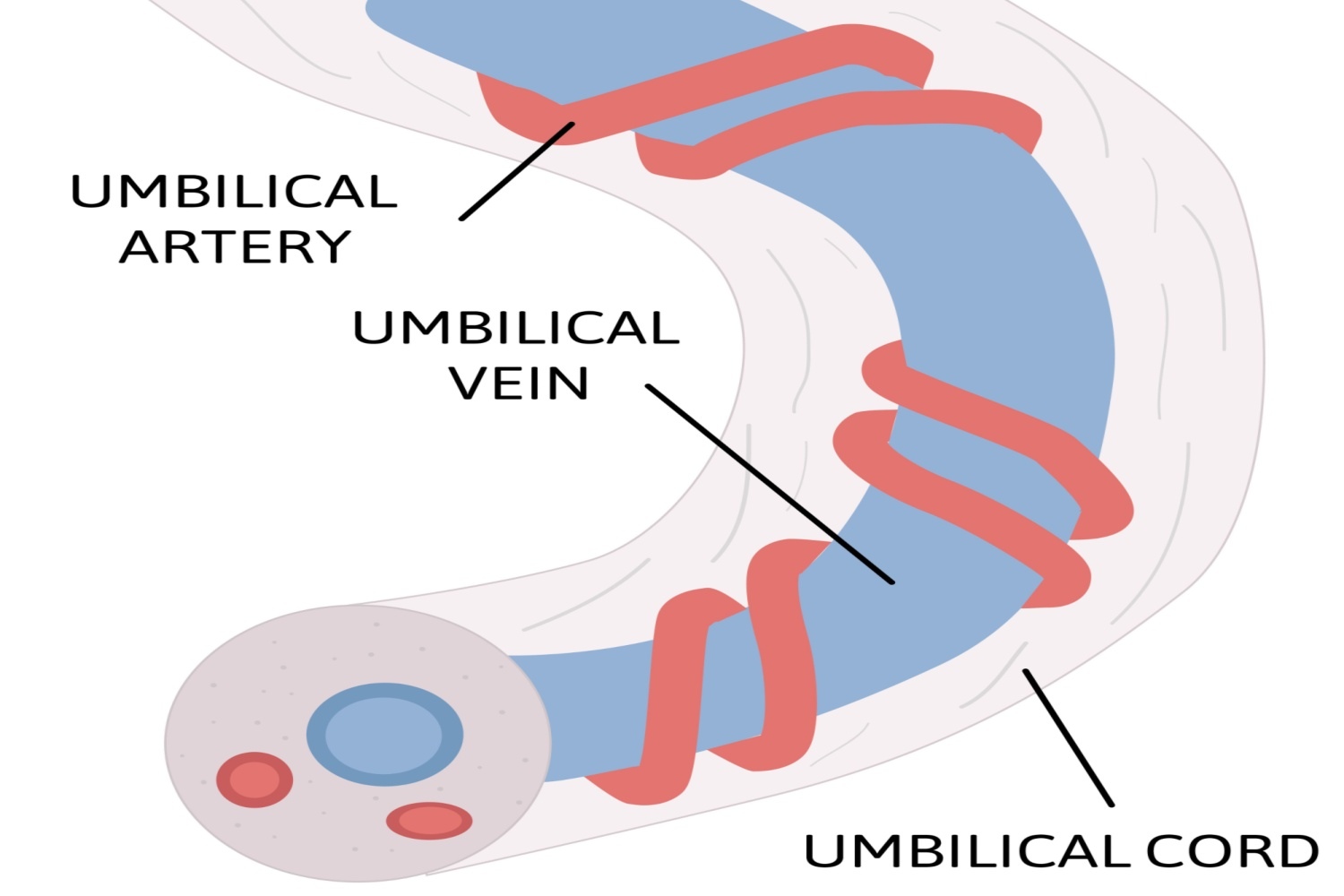
In the journey of pregnancy, the umbilical cord is like a bridge connecting a mom and her growing baby. Usually having two arteries and one vein, it’s a lifeline for sharing important stuff like nutrients and oxygen. But sometimes, this script gets a little different with what’s called a two-vessel cord, or a single umbilical artery (SUA). In this article, we’re going to unravel the story of the two-vessel cord – what it is, what it means, and why it’s a talking point in pregnancy conversations.
Picture this: you’re backstage in the world of pregnancy, and suddenly the term “two-vessel cord” steps into the spotlight. It’s like a unique twist in the plot, signaling a change from the usual three-vessel cord. This article is here to unpack the meaning behind the two-vessel cord, exploring why it matters and what it could mean for both the mom-to-be and the little one on the way. Join us as we navigate through the world of pregnancy intricacies and shine a light on the importance of understanding the two-vessel cord journey.
What Is a Normal Umbilical Cord?

The umbilical cord [1] is like a special link between a mom and her baby during pregnancy. It has two tiny tubes (arteries) that carry away the not-so-good stuff from the baby to the mom, and one larger tube (vein) that brings all the good stuff from the mom to the baby. [2] It’s kind of like a direct line for the baby to get everything it needs to grow inside the mom’s tummy.
Even after the baby is born, parts of this special link help make certain blood vessels in the body. So, from the very start to when the baby arrives, the umbilical cord is a super important part of the journey, showing the strong connection and care between a mom and her baby.
What Is a Two-Vessel Cord?
 A two-vessel cord, also known as a single umbilical artery (SUA), occurs when one of the arteries is absent, leaving the cord with one artery and one vein. It could be related to potential developmental concerns for the infant. These issues are often related to the urinary system, but they’re usually minor and can be found during routine pregnancy ultrasounds.
A two-vessel cord, also known as a single umbilical artery (SUA), occurs when one of the arteries is absent, leaving the cord with one artery and one vein. It could be related to potential developmental concerns for the infant. These issues are often related to the urinary system, but they’re usually minor and can be found during routine pregnancy ultrasounds.
After the baby is born, doctors might check for these urinary system issues through a physical exam and additional tests if needed. However, not every baby with a two-vessel cord needs extra tests unless there are signs of a problem.
So, in simple terms, a two-vessel cord could hint at some baby health concerns, but doctors keep an eye on it, and most babies turn out just fine. [2] [3]
What Causes This Umbilical Cord Abnormality?
The cause [4] of single umbilical artery (SUA) isn’t entirely clear. Still, one common theory suggests it may happen because one of the umbilical arteries doesn’t form properly or degenerates later during development. This means that instead of the usual two arteries and one vein in the umbilical cord, there’s only one artery.
When SUA is found during prenatal ultrasounds, healthcare providers pay extra attention because it’s associated with a slightly higher chance of chromosomal abnormalities. By closely monitoring pregnancies with SUA, doctors aim to ensure the well-being of both the mom and the baby. Ongoing research continues to explore more about the SUA and its implications for pregnancy.
What Are The Risk Factors For a Two-Vessel Cord?

Certain things may increase the chance [5] of having a single umbilical artery (SUA) during pregnancy. These factors include:
- Maternal Age: How old the mom is can be a factor.
- Smoking During Pregnancy: If the mom smokes while pregnant, it’s considered a risk.
- Ethnicity: Different ethnic backgrounds may have different risks linked to SUA.
- Multiple Pregnancies: Moms who have been pregnant multiple times may face a higher risk.
- Twins or More: Cases with twins, triplets, or more babies might have a higher risk of SUA.
- Intrauterine Growth Restriction (IUGR): The baby grows slower than expected in the womb.
- Low Birth Weight: Babies born weighing less than usual for their stage of development.
- Preterm Delivery: Delivering the baby before completing the full term of pregnancy.
- Hypertensive Disorders in Pregnancy: Conditions characterized by high blood pressure during pregnancy.
Knowing these factors helps healthcare providers keep a close watch on pregnancies with SUA, allowing for timely interventions and appropriate care to manage potential complications.
[Read: Importance of Umbilical Cord and Placenta During Pregnancy]
How Is A Two-Vessel Cord Diagnosed?
The identification [3] of a two-vessel cord, usually occurs during routine prenatal ultrasound exams, which are a standard part of prenatal care for most pregnant individuals. During this ultrasound, the healthcare provider assesses the structure of the umbilical cord, among other things.
When a two-vessel cord is found, healthcare providers may opt for additional tests or ultrasounds to further ensure the baby’s well-being. It’s important to note that detecting a two-vessel cord doesn’t automatically imply complications; however, healthcare professionals may take extra precautions to monitor the pregnancy closely.
Does Single Umbilical Artery Pose a Risk To The Baby?

Single Umbilical Artery (SUA) presents several implications throughout pregnancy and neonatal development. Single Umbilical Artery (SUA) increases the overall risk [6] [7] of:
- Congenital anomalies – particularly in renal, cardiovascular, and musculoskeletal systems.
- Chromosomal abnormalities
- Premature birth.
- Low birth weight.
- Intrauterine and intrapartum deaths among fetuses.
- Intrauterine growth restriction.
Isolated Single Umbilical Artery (SUA) is associated with increased risks:
While a two-vessel cord may slightly increase the risk of certain complications, it’s crucial to highlight that many pregnancies with this condition have positive outcomes.
In summary, a two-vessel umbilical cord may initially raise concerns, but with proper monitoring and care, many pregnancies with this variation yield positive outcomes. Regular check-ups and open communication with healthcare providers play a pivotal role in ensuring the best possible health for both the mother and the baby. Vigilance, timely interventions, and adherence to recommended healthcare measures contribute to a reassuring pregnancy journey, highlighting the resilience of the maternal-fetal connection.
FAQ’s
1. Is a 2 Vessel Cord High Risk Pregnancy?
Yes, pregnancies with a two-vessel cord pose a slightly higher risk, but many have positive outcomes. Careful monitoring and following recommended healthcare measures are crucial for ensuring the well-being of both the mother and the baby.
2. What Should I Do If I Have A 2 Vessel Umbilical Cord?
If you have a two-vessel umbilical cord, consult your healthcare provider to discuss the implications and ensure appropriate monitoring during your pregnancy. Adhere to regular prenatal check-ups, and ultrasounds, and follow your doctor’s advice while discussing your birth plan.
3. Can Umbilical Artery Flow Improve?
Optimizing umbilical artery flow in the presence of a two-vessel cord is contingent on factors like gestational age and overall health. Collaborating closely with your healthcare provider for personalized assessment, vigilant pregnancy monitoring, and regular prenatal check-ups, including ultrasounds, is imperative to devise the most effective strategy for ensuring optimal maternal and fetal health.
References
- Anatomy, Abdomen and Pelvis: Umbilical Cord –
[https://www.ncbi.nlm.nih.gov/books/NBK557389/ ] - Single Umbilical Artery –
[Single Umbilical Artery – an overview | ScienceDirect Topics] - Urologic anomalies and two-vessel umbilical cords: what are the implications? – [https://pubmed.ncbi.nlm.nih.gov/12648433/]
- Association Between Isolated Single Umbilical Artery and Perinatal Outcomes: A Meta-Analysis – [https://www.ncbi.nlm.nih.gov/pmc/articles/PMC4913809/]
- Determination of risk factors and perinatal outcomes of singleton pregnancies complicated by isolated single umbilical artery in Turkish population –
[https://www.ncbi.nlm.nih.gov/pmc/articles/PMC4358306/] - Single umbilical artery risk factors and pregnancy outcomes –
[https://pubmed.ncbi.nlm.nih.gov/20859147/] - Single umbilical artery –
[https://www.ncbi.nlm.nih.gov/pmc/articles/PMC4439720/]
Read Also: Umbilical Cord Prolapse – Causes And Tips To Manage
